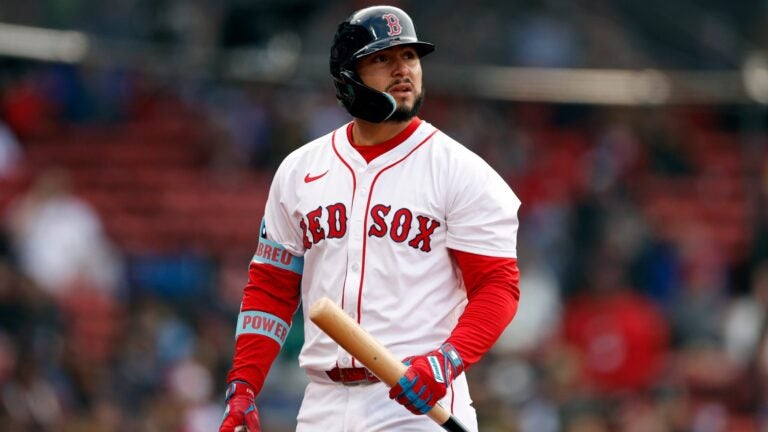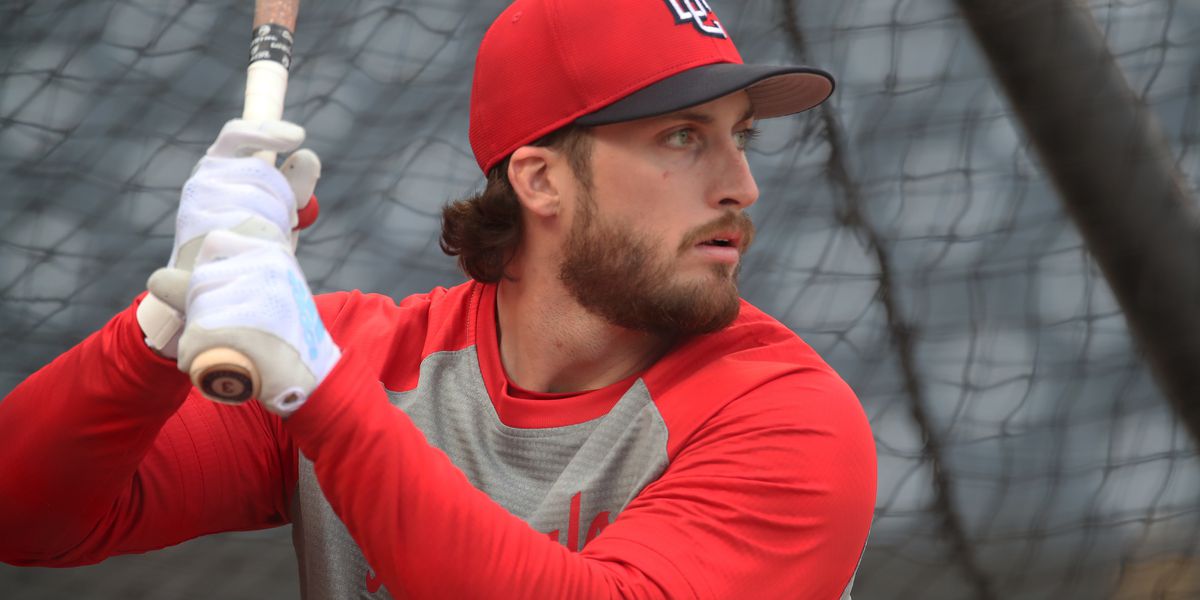
We are roughly three weeks into the 2025 MLB regular season, which is about when the sample sizes stop being so small, but also when you’re still free to say “it’s still early.” Because it is still early. So, so early. If the 162-game season were a nine-inning game, there would be two outs in the bottom of the first inning right now. It is a long season, folks. A very long season.
And yet, there are a few things we can gleam from the little bit of baseball that has been played. Here now are three trends worth knowing one day short of three weeks into the new season.
Schwarber the lefty destroyer
It is remarkable how many tools teams and players have at their disposal nowadays. Team quite literally have labs staffed with trained physicists to help their pitchers and hitters improve. The “average player becomes an All-Star” story is sexy, though that’s not always what teams are chasing. If there’s a way to make players even 2% better, they’re looking for it. Every little bit matters.
Player development is not limited to young players. Improving a veteran qualifies as player development too (see: Tommy Edman and the Dodgers), and one of the most significant recent veteran player development success stories is Kyle Schwarber against left-handed pitchers. Once a liability against southpaws, the Phillies slugger is now downright dangerous against same-side pitchers.
Last Tuesday, Schwarber launched this absolute nuke off reigning NL Cy Young Chris Sale. It was both the farthest (462 feet) and hardest hit (116.7 mph exit velocity) home run Sale has allowed to a lefty in his career.
Going into Tuesday night’s game, Schwarber was 9 for 21 (.429) with three homers against lefties this year, which is as many home runs as he had against righties in nearly half the at-bats. That’s a tiny sample, no doubt, but Schwarber’s improvement against lefties goes back a few years now. It’s not limited to 2025. Here are the numbers:
| PA | AVG/OBP/SLG | HR | BB% | K% | |
|---|---|---|---|---|---|
|
2015-22 vs. LHP |
813 |
.208/.317/.368 |
28 |
12.7% |
32.0% |
|
2023-25 vs. LHP |
529 |
.253/.378/.486 |
30 |
15.5% |
30.1% |
Once upon a time, Schwarber would sit against tough lefties, and even mediocre lefties some nights. Now he’s in the lineup every single game. And he’s not just holding his own against lefties; he’s doing major damage against him. Schwarber closed that hole in his game. How? He went into the lab and got to work. From the Philadelphia Inquirer last June:
“Left-handed angles, left-handed arm, left-handed flips – the more that he could face lefties, the easier it was going to be,” (Phillies hitting coach Kevin) Long said. “My assistant at the time was Pat Roessler. He literally pulled Schwarber every single day, and he’d say, ‘Hey, let’s go get your 50 breaking balls off the machine.’ So, he did that every single day, as well. Anytime that a lefty had to throw an inter-squad game in spring training we had Schwarber face him.
“So, we just pushed one lefty after another on him, and he just got better and better.”
Schwarber still does pregame prep work against lefties, even when that night’s opposing starter is a righty. It sounds simple, right? Go hit in the cage against a pitching machine that mimics a lefty. Except these days pitching machines can show the hitter different arm angles, different pitch shapes, etc. It’s not the old Iron Mike machine that delivers pitches from the same spot over and over.
Now 32, Schwarber and the Phillies deserve a lot of credit for improving something that was a real weakness earlier in his career, and turning it into a strength. He’s gone from a player who was out of the lineup against southpaws to someone the Phillies want at the plate against a lefty in a big spot. His power is enormous, among the best in the game, and now it’s usable against lefties too.
Singer cuts up lefties
I was among the skeptics when the Reds acquired right-hander Brady Singer in the Jonathan India trade with the Royals. Singer is a perfectly cromulent mid-rotation starter, though he’s had home run trouble and issues with lefties throughout his career. The move from Kauffman Stadium into homer-happy Great American Ball Park seemed like it would go poorly.
Three starts into his Reds career, Singer has a 3.18 ERA in 17 innings, and he’s allowed three runs and only one home run in 12 innings at his new home ballpark. That includes throwing seven shutout innings against the Rangers in his home debut as a Red.
“He’s nasty. Facing him, he’s gross,” Reds catcher Jose Trevino said following Singer’s Reds debut (via The Athletic). “He’s got nasty stuff, and just adding pitches like that really helps his arsenal.”
Singer threw 16 cutters against the Rangers, the first 16 cutters he’s thrown as a big leaguer. He threw 14 cutters in his second start and nine in his third start. In all, he’s throwing his new pitch 15% of the time. The pitch models grade the cutter out as an average-at-best offering, but it is another tool in the shed, and it has helped Singer against lefties in the early going.
| PA | AVG/OBP/LG | K% | BB% | |
|---|---|---|---|---|
|
2023 vs. LHB |
414 |
.263/.337/.444 |
19.8% |
8.5% |
|
2024 vs. LHB |
419 |
.291/.367/.488 |
21.7% |
9.3% |
|
2025 vs. LHB |
38 |
.212/.289/.364 |
26.3% |
10.5% |
Tiny, tiny sample. Please don’t read this as “Singer has figured out lefties.” This is more of a “Singer is throwing a cutter now and it is a new weapon he can use against lefties” acknowledgement. Maybe it works long-term and Singer takes the next step, or maybe it doesn’t and he has to go back to the drawing board. The super duper early returns on the cutter are promising though.
And really, the benefit of the cutter isn’t so much the quality of the pitch. It’s that it allows him to back off his four-seamer fastball and sinker a bit, two pitches lefties crushed in the past. The cutter is another look and another wrinkle hitters must respect, and it means Singer can throw fewer of the fastballs lefties have destroyed. Anything that keeps hitters guessing is a positive.
Whenever a new pitch makes it out of spring training and into the regular season, it’s worth noting. Lots of pitchers try lots of new pitches in March, but only a few take it into Opening Day. Singer’s cutter made the cut and is now a legitimate part of his arsenal with a 15% usage rate. Credit to Singer and the Reds for coming up with a way to improve his game.
Stolen bases continue to climb
Now that the season has had a chance to breathe a bit, the league home run rate (1.07 HR/9) has settled in almost exactly where it was through three weeks last season (1.05 HR/9), though regular old base hits are down. The league batting average on balls in play is .280 in the early going. Through three weeks last year, it was .291. That means fewer singles, doubles, and triples.
Home runs are static and base hits are down. What are up is stolen bases. This is Year 3 with the larger bases and limit on pitcher disengagements, two rules that encourage stolen bases and have had the desired impact. The league stole 2,486 bases in 2022, the last season with the old rules. That number jumped to 3,503 in 2023 and 3,617 in 2024. Here are the numbers for 2025:
| 2023 | 2024 | 2025 | |
|---|---|---|---|
|
First 3 weeks SB total |
374 |
370 |
404 |
|
Full season SB total |
3,503 |
3,617 |
? |
|
First 3 weeks SB success rate |
81% |
77% |
79% |
|
Full season SB success rate |
80% |
79% |
? |
|
First 3 weeks SB attempt rate |
6.3% |
6.5% |
7.8% |
|
Full season SB attempt rate |
6.5% |
7.0% |
? |
Stolen base attempt rate is the number of steal attempts per stolen base opportunity, with a stolen base opportunity defined as a runner on first or second with the next base unoccupied. In 2022, the final year with the old rules, the league attempted a steal in 5.0% of stolen base opportunities. The attempt rate has jumped big time with the new rules.
In the early going this year, stolen base attempts are way up from the same point in the last two seasons — it’s up more than one full percentage point from 2024! — while the success rate has more or less held steady. Volume has increased without efficiency taking a hit. Basically, teams realized they could steal even more than they already were, so they’re stolen base attempts shot up.
Also, look at the stolen attempt rate in the first three weeks compared to the full season. In 2023 and 2024, the full season attempt rate was higher than the first three weeks, which makes sense. It’s cold early in the season, often rainy, which means a soft infield that isn’t great for running. Once the weather warms up, teams run even more. We could have an 8% attempt rate in 2025!
With non-homer base hits down, stolen bases take on added importance. If you can’t get those extra 90 feet on a single, you have to manufacture them with your legs. Stolen bases are among the most exciting plays in the game. The more the merrier. Now, if the league could find a way to create more singles, doubles, and triples without sacrificing steals, we’d really be in business.



